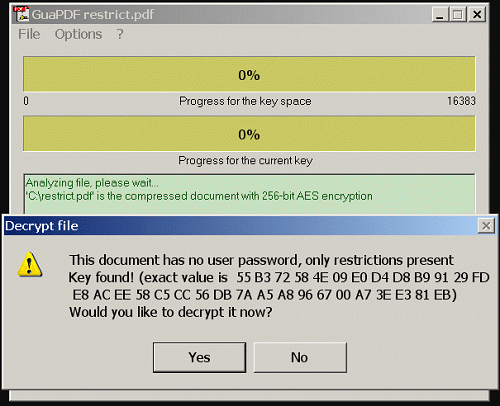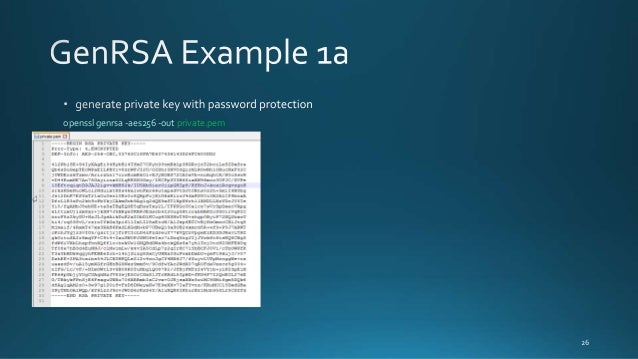This post briefly describes how to utilise AES to encrypt and decrypt files with OpenSSL.
- Aes 256 Java
- Aes 256 Software
- C Openssl Generate Aes 256 Key Size
- Openssl Generate Aes 256 Key
- Aes-256 Encryption
File encryption using OpenSSL. GitHub Gist: instantly share code, notes, and snippets. Create, Manage & Convert SSL Certificates with OpenSSL One of the most popular commands in SSL to create, convert, manage the SSL Certificates is. CLI$ echo -n 'TEST1' openssl enc -aes256 -k FUUU -nosalt -abYbkQJcDFZt3y3UQEMbEegiOSNSString.leSYT = @'bYbkQJcDFZt3y3UQEMbEeg';NSData.data = NSData dataFromBase64String:leSYT;NSL. This video describe how to generate an RSA private key and certification x509 to be used in Wakansa, to secure communication. Generating AES Keys using command line. Does anyone know how to generate AES 128, 192, 0r 256 keys using the openssl command line.
AES - Advanced Encryption Standard (also known as Rijndael).
OpenSSL - Cryptography and SSL/TLS Toolkit
We’ll walk through the following steps:
- Generate an AES key plus Initialization vector (iv) with
openssland - how to encode/decode a file with the generated key/iv pair
Note: AES is a symmetric-key algorithm which means it uses the same key during encryption/decryption.
Generating key/iv pair
We want to generate a 256-bit key and use Cipher Block Chaining (CBC).
The basic command to use is openssl enc plus some options:

-P— Print out the salt, key and IV used, then exit-k <secret>or-pass pass:<secret>— to specify the password to use-aes-256-cbc— the cipher name
Note: We decided to use no salt to keep the example simple.
Aes 256 Java
Issue openssl enc --help for more details and options (e.g. other ciphernames, how to specify a salt, …).
Encoding
Let's start with encoding Hello, AES! contained in the text file message.txt:
Decoding
Decoding is almost the same command line - just an additional -d for decrypting:
Note: Beware of the line breaks
While working with AES encryption I encountered the situation where the encoder sometimes produces base 64 encoded data with or without line breaks...
Short answer: Yes, use the OpenSSL -A option.
This post briefly describes how to utilise AES to encrypt and decrypt files with OpenSSL.
AES - Advanced Encryption Standard (also known as Rijndael).
OpenSSL - Cryptography and SSL/TLS Toolkit
We’ll walk through the following steps:

- Generate an AES key plus Initialization vector (iv) with
openssland - how to encode/decode a file with the generated key/iv pair
Note: AES is a symmetric-key algorithm which means it uses the same key during encryption/decryption.
Generating key/iv pair
We want to generate a 256-bit key and use Cipher Block Chaining (CBC).
The basic command to use is openssl enc plus some options:
-P— Print out the salt, key and IV used, then exit-k <secret>or-pass pass:<secret>— to specify the password to use-aes-256-cbc— the cipher name
Note: We decided to use no salt to keep the example simple.
Issue openssl enc --help for more details and options (e.g. other ciphernames, how to specify a salt, …).
Encoding
Aes 256 Software
Let's start with encoding Hello, AES! contained in the text file message.txt:
Decoding
C Openssl Generate Aes 256 Key Size
Decoding is almost the same command line - just an additional -d for decrypting:
Openssl Generate Aes 256 Key

Aes-256 Encryption
Note: Beware of the line breaks
While working with AES encryption I encountered the situation where the encoder sometimes produces base 64 encoded data with or without line breaks...
Short answer: Yes, use the OpenSSL -A option.